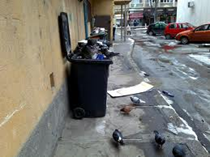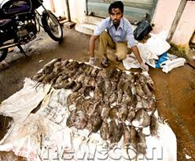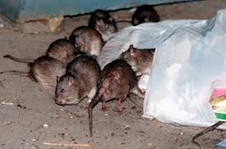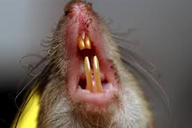Paris is undoubtedly one of the most romantic cities of all times. It is beautiful, scenic, culturally advance and home to the art of world-famous artists like Picasso. But as seen in fairy tales, beauty and beast walk side by side. Similarly in this city, within the backdrop of beauty, there are also beasts lurking around. These beasts are none other than Rats. Let’s have a look at the following article published in The Local-France’s news in English on 17th April 2013.
Rodent police launch war on Paris rats
Better weather and warmer air bring everyone back on to the streets of the French capital, including the city’s millions of scurrying rats. And that can mean only one thing – it’s rat extermination season for one dedicated Paris police squad.
It’s that time of year again. Spring is in the air, temperatures are climbing, and for one group of Paris residents, that means it’s time to emerge from their holes after a long winter underground, and venture out into the open air.
That’s right – the annual rat re-infestation of Paris is underway, which means its time for the Paris police to officially kick off their annual “deratization” campaign.
The UPNA – unité de prévention des nuisances animales (animal pollution prevention unit) – of the Paris prefecture of police, which was founded back in 2000, started its yearly war against rodent pests on Monday, and will fight on until June 14th, according to the prefecture’s website.
It is estimated that there are millions of rats scurrying about in the dark underground passages of the City of Light, though it’s impossible to give an accurate number.
“Legend has it there are two rats for every person living in Paris,” Jean-Michel Derrin, who heads the pest-control police unit, told French daily Le Parisien on Wednesday.
“But the truth is, we just don’t know,” he added.
Official statistics aside, rat infestation is a serious problem in this city of over 2 million (human) residents.
The animals leave excrement behind them, cause damage to infrastructure and furniture if they get access to a dwelling, and according to BFMTV, each year they infect hundreds of Parisians with leptospirosis – a serious disease with extremely unpleasant symptoms such as vomiting, diarrhea and even liver failure.
“Rats are everywhere – I don’t even let my kids play outside anymore,” one resident of the city’s 18th arrondissement told Le Parisien.
The designated rodent squad consists of six inspectors who will respond to calls about an infestation, ask property-owners to take certain measures – cleaning out basements or boarding up cellar windows, for example – and then call in an exterminator to ‘evict’ the rodents.
City authorities evidently take the rat problem seriously enough to issue verbal warnings and €450 fines to anyone who fails to comply with the unit’s instructions.
Anyone with a rat problem in the French capital can call UPNA on 01 40 27 16 00.
The measures taken by the rodent police do not assure full eviction of these creatures from the wonderful city of Paris. The city has seen many historical moments and has also gone through Cultural Revolution known as Renaissance. But one thing has not changed in the city and that is the population of rats and their consequences on human health. The above article proves that this problem is far from over.
With the Seine, the subway and the numerous restaurants, Paris has become a Rat Paradise of sorts. With four times as many rats as humans in Paris, the frightening statistics show that the furry cosmopolitans are perhaps 8 million in total, according to the grim prognoses of experts.
There has to be some solutions which can act as a roadblock for the budding population of these rats in Paris. We, at C Tech Corporation have come up with the right solution for this. It is known asCombirepel™. Combirepel™ is a niche product which is a rodent aversive. The difference between this product and other rodenticides is that it is an extremely low toxicity and extremely low hazard and eco-friendly. It works on the mechanism of repellence and does not kill the target species but only repels them.
It is available in the form of masterbatches and can be incorporated into a large group of base polymers. Thus it can be used in cables, wires, pipes, films etc. It is also available in lacquer and liquid form and can, therefore, be used to coat nearly all application in and around our surroundings.
Using this eco-friendly product will definitely help reduce the rat menace in Paris and help this beautiful city to remain safe with greener solutions.
The product is compliant with ROHS, ROHS2, ISO, REACH, APVMA, NEA, EU-BPR, and FIFRA exempted.
Contact us at technical.marketing@ctechcorporation.com if you’re facing problems with rodents and get best remedies to combat the pest menace.
Also, visit our websites:
http://www.ctechcorporation.com/
http://www.rodrepel.com/
http://www.termirepel.com/
http://www.combirepel.com/
Follow our Facebook pages at:
1] https://www.facebook.com/Combirepel-411710912249274/
2] https://www.facebook.com/Termirepel-104225413091251/
3] https://www.facebook.com/Rodrepel-120734974768048/
Follow us on our Twitter pages at:
1] https://twitter.com/rodrepel
2] https://twitter.com/termirepel
3] https://twitter.com/combirepel

 In northwestern India, you’ll find the city of Deshnoke, home to a place of worship called the Karni Mata Temple. What’s interesting about this temple — and what makes it a fitting addition to the list — is that it’s positively packed with rats. Some 20,000, in fact. Not only are they welcomed, they’re worshipped.
In northwestern India, you’ll find the city of Deshnoke, home to a place of worship called the Karni Mata Temple. What’s interesting about this temple — and what makes it a fitting addition to the list — is that it’s positively packed with rats. Some 20,000, in fact. Not only are they welcomed, they’re worshipped. Rat Island, part of the Aleutian Islands, is just one example of an island habitat devastated by invasive rats. About 90 percent of the world’s islands have been overrun by rodent stowaways, which can spell disaster for native species especially seabirds.
Rat Island, part of the Aleutian Islands, is just one example of an island habitat devastated by invasive rats. About 90 percent of the world’s islands have been overrun by rodent stowaways, which can spell disaster for native species especially seabirds. Rats show no respect for famed romantic locales, either. In 2008, Paris officials estimated the city’s rat population had reached 8 million, and since only about 2 million people make their homes in Paris proper, that meant there were about four rats pounding the pavement for every Parisian.
Rats show no respect for famed romantic locales, either. In 2008, Paris officials estimated the city’s rat population had reached 8 million, and since only about 2 million people make their homes in Paris proper, that meant there were about four rats pounding the pavement for every Parisian. The sprawling metropolis plays host to tens of millions of rats, which carry the disease via their fleas and hence pose a danger to the city’s population.
The sprawling metropolis plays host to tens of millions of rats, which carry the disease via their fleas and hence pose a danger to the city’s population. Like many densely populated areas, New York City has a prevalence of rats. Politicians and health authorities actively pursue policies and programs to manage the rat population. The exact number of rats is unknown, but it is estimated that there are at least as many rats as people. The city’s rat population is dominated by the Brown rat and Black rat.
Like many densely populated areas, New York City has a prevalence of rats. Politicians and health authorities actively pursue policies and programs to manage the rat population. The exact number of rats is unknown, but it is estimated that there are at least as many rats as people. The city’s rat population is dominated by the Brown rat and Black rat. Rats like to live where people live. They quickly adjust to the neighborhood. Rats can thrive on just an ounce of food and water daily, so when they enter a neighborhood and gain access to meat, fish, vegetables, and grains, they will stay. Rats prefer to feed in and around homes, restaurants, and businesses. But they will settle for scraps from trash bags and cans, private yards and what they find at the community refuse disposal and transfer station. Rats get the shelter they need from tall weeds and grass, fences and walls, rubbish piles and abandoned appliances.
Rats like to live where people live. They quickly adjust to the neighborhood. Rats can thrive on just an ounce of food and water daily, so when they enter a neighborhood and gain access to meat, fish, vegetables, and grains, they will stay. Rats prefer to feed in and around homes, restaurants, and businesses. But they will settle for scraps from trash bags and cans, private yards and what they find at the community refuse disposal and transfer station. Rats get the shelter they need from tall weeds and grass, fences and walls, rubbish piles and abandoned appliances.